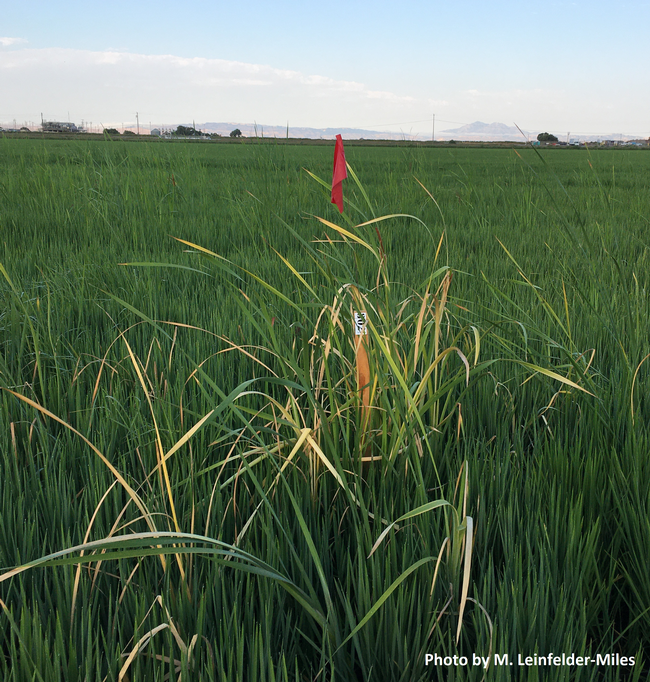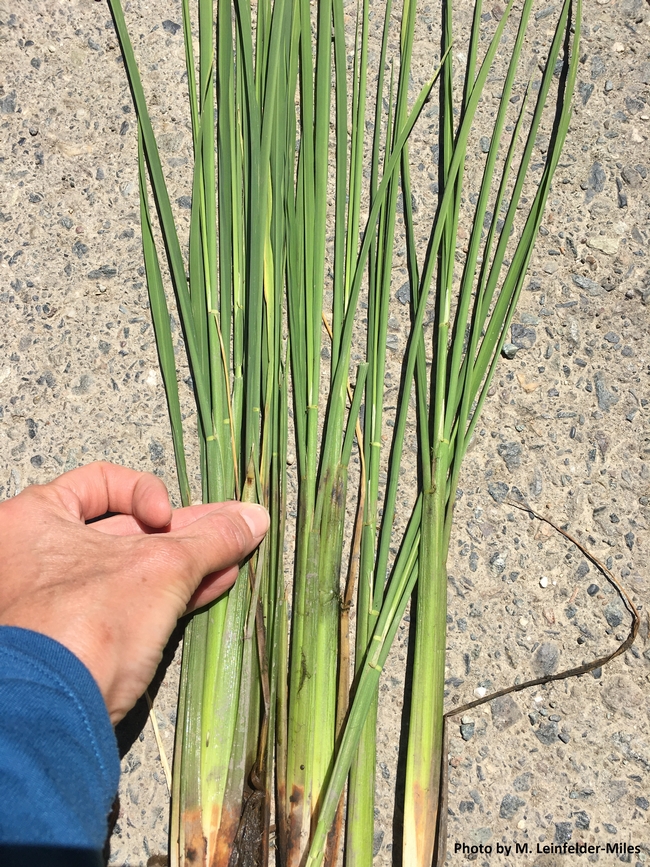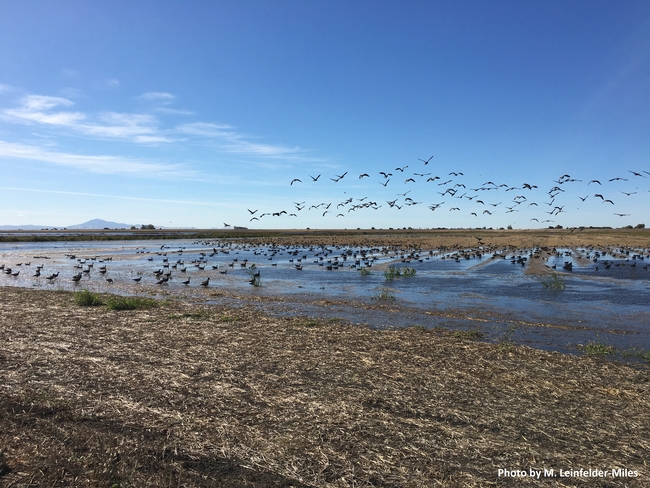In 2022, I estimate rice acreage in the Delta, south of the Yolo Bypass, was at least 8,000 acres. Most Delta rice is grown in San Joaquin County, but there is some acreage in Sacramento County. While Delta rice acreage is relatively small compared to that in the Sacramento Valley, it has been steadily increasing over the last several years (Table 1).
Table 1. Rice acreage and yield according to the San Joaquin County Agricultural Commissioner's crop reports. County rice production is predominantly in the Delta region.
Given the increasing interest in rice production among Delta growers, and the differences in production practices from the Sacramento Valley, UC Cooperative Extension and UC Davis will be releasing a cost of production report specifically for Delta rice later this year or in early 2023. A Delta rice cost study was last produced in 2007, so updating the study was long-overdue. I want to thank all the growers who participated in a focus group to update the study.
Cool temperatures can make the Delta a challenging place to grow rice. Low night-time temperatures can cause blanking, which results in empty grains. Growers are limited to using only very-early and early maturing varieties. Most of the Delta acreage was planted with variety M-206, but some growers also planted a portion of their acreage with M-105. In 2022, we continued the UCCE Delta variety trial, which will help to identify and advance cold-tolerant varieties. The Delta trial is part of a statewide network of trials, led by UC Rice Extension Specialist, Bruce Linquist, and coordinated by Staff Researcher, Ray Stogsdill. I anticipate that the statewide results will be ready in early 2023.
This year, I worked with growers and consultants on a handful of pests. Weed management is always top-of-mind for rice growers. There are limited practices and products that can control problematic weeds, and in some circumstances, the weeds may develop resistance to the herbicides that are available. If herbicide resistance is suspected, please contact me so that we can submit weed seeds for testing. We would collect the seeds in the late summer or early fall when they have matured but have not shattered. Resistance testing is overseen by UC Weed Science Extension Specialist, Kassim Al-Khatib, and takes place in greenhouses during the winter. By the following spring, we provide the grower with information on which herbicides are still working and which are not.

I have been trapping armyworms in the Delta since 2016, in collaboration with fellow farm advisor, Luis Espino. The traps catch true armyworm moths. They were deployed on three ranches and monitored weekly. In 2022, we recovered the highest moth counts since 2017, and the peak flight occurred about one week earlier than in 2017. This is important information for management because, based on the armyworm life cycle, we know that peak worm populations occur approximately two weeks after peak moth flight. In other words, growers can make informed decisions based on the monitoring data and adapt their management to the field conditions. Trap monitoring is one part of an integrated pest management program for armyworms, which also includes scouting for feeding damage and the worms themselves. Over the years, I have observed armyworms in riparian and wetland vegetation that neighbor rice fields, so it is important to scout those areas, too.


We should continue to keep weedy rice on our radars because we have seen it in the Delta in the past. Where we have observed light infestations, it appears that keen management – including in-season rogueing, post-harvest management that includes straw chopping but not incorporation, and winter flooding – can reduce, if not eliminate the pest. These are our management tools until a herbicide is approved for spot-spraying. Growers should also pay attention to equipment sanitation – harvesting weedy rice fields last (if possible) and thoroughly cleaning out equipment after harvesting fields where weedy rice has been observed.
Finally, I will be starting new projects this winter, in collaboration with fellow farm advisor, Whitney Brim-DeForest, and graduate student, Sara Rosenberg, to evaluate winter cover cropping between rice crops. Our objectives are to evaluate carbon and nitrogen cycling and variety survivability during the cool, wet (we hope!) winter conditions. These projects are supported by the CDFA Healthy Soils Program and the CA Rice Research Board. I look forward to sharing results in the years to come.
I am grateful to work with a great team of UC colleagues on these rice projects. I am also grateful for all the growers who have collaborated with us. I wish everyone a good end to the year, and I look forward to working with you again in 2023.

